 |
 |
 |
| |
Delayed Diagnosis of HCV - Results of Nationwide US Study
|
| |
| |
DDW 2024 May 18-21 Wash DC
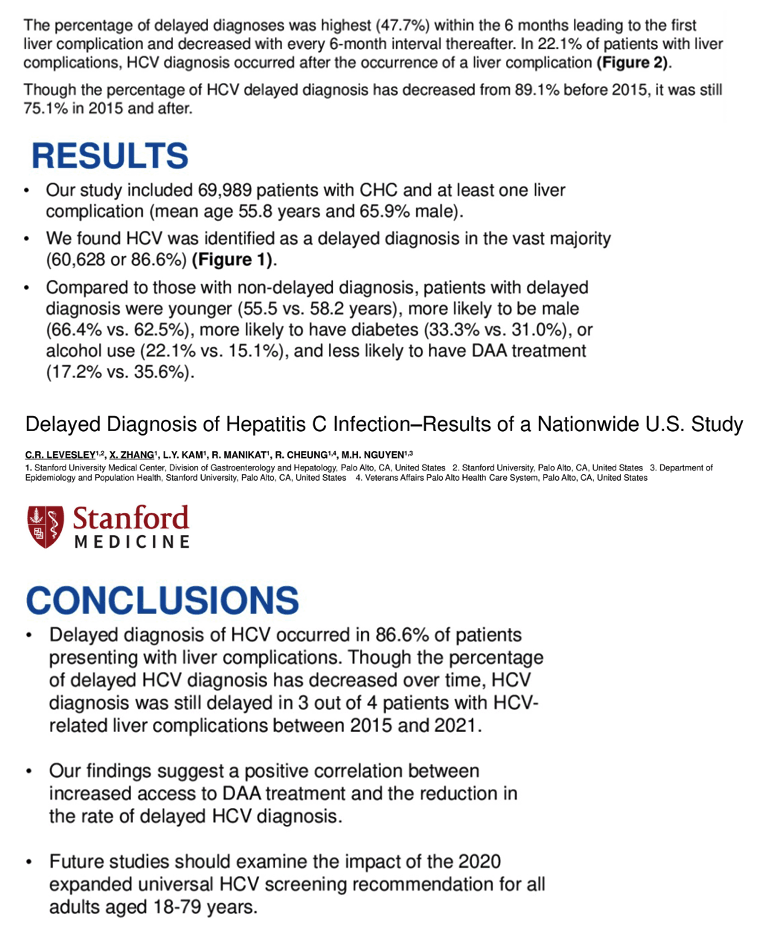
PERICOMPLICATION DIAGNOSIS OF HEPATITIS C INFECTION-RESULTS OF A NATIONWIDE U.S. STUDY
ABSTRACT
Background & Aims: Universal HCV screening for the U.S. birth cohort born during 1945-1965 was first recommended in 2012 and effective direct-acting antiviral (DAA) therapies for HCV first became available in 2014. However, it is unclear how such advances have affected the HCV care cascade. We aimed to investigate the proportion of HCV pericomplication diagnosis (delayed HCV diagnosis in patients with a liver complication) and identified their associated factors in a nationwide real-world cohort in the U.S.
Methods: We conducted a retrospective cohort study of adults with chronic hepatitis C (CHC) and a liver complication using Merative Marketscan® Research Databases (1/2007-12/2021). Pericomplication HCV diagnosis was defined as HCV diagnosis occurring within 2 years prior to or any time after occurrence of a liver complication such as cirrhosis, hepatocellular carcinoma (HCC), or liver transplant.
Results: Our study included 69,989 patients with CHC and at least one liver complication (mean age 55.8 years and 65.9% male). We found HCV was identified as a pericomplication diagnosis in the vast majority (60,628 or 86.6%) (Figure 1). Compared to those with non-pericomplication diagnosis, patients with pericomplication diagnosis were younger (55.5 vs. 58.2 years), more likely to be male (66.4% vs. 62.5%), more likely to have diabetes (33.3% vs. 31.0%), or alcohol use (22.1% vs. 15.1%), and less likely to have DAA treatment (17.2% vs. 35.6%). The percentage of pericomplication diagnoses was highest (47.7%) within the 6 months leading to the first liver complication and decreased with every 6-month interval thereafter. In 22.1% of patients with liver complication, HCV diagnosis occurred after the occurrence of a liver complication. Though the percentage of HCV pericomplication diagnosis has decreased from 89.1% before 2015, it was still 75.1% in 2015 and after. In multivariable logistic regression analysis adjusted for age, sex, insurance type, region, Charlson Comorbidity Index (CCI), alcohol use, illicit drug use, mental health, DAA use, and year of complication, higher CCI and complication diagnosis date after 2015 were associated with lower odds of having a pericomplication diagnosis for HCV, while male sex, alcohol use, and mental health were associated with higher odds of having a pericomplication HCV diagnosis.
Conclusion: The vast majority of HCV-infected patients with liver complications were diagnosed within 24 months of a liver complication or even afterwards. Though the percentage of HCV pericomplication diagnosis has decreased over time, HCV diagnosis was still delayed in 2 out of 3 patients with HCV-related liver complication between 2015-2021. Future studies should examine the impact of the 2020 expanded universal HCV screening recommendation for all adults aged 18-79 years.
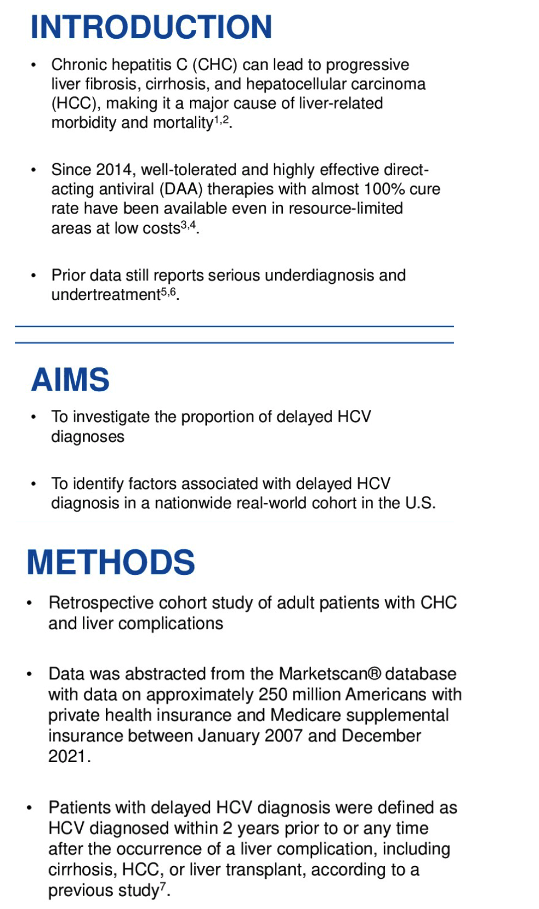
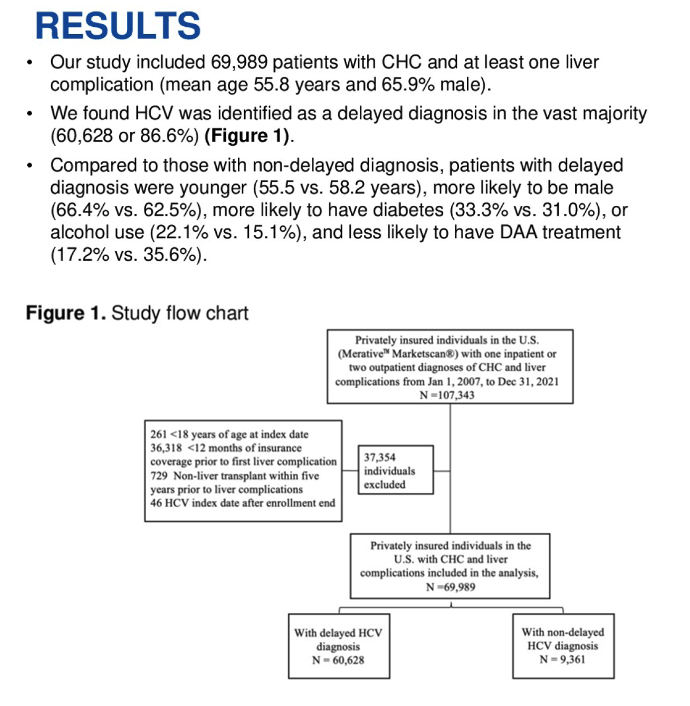
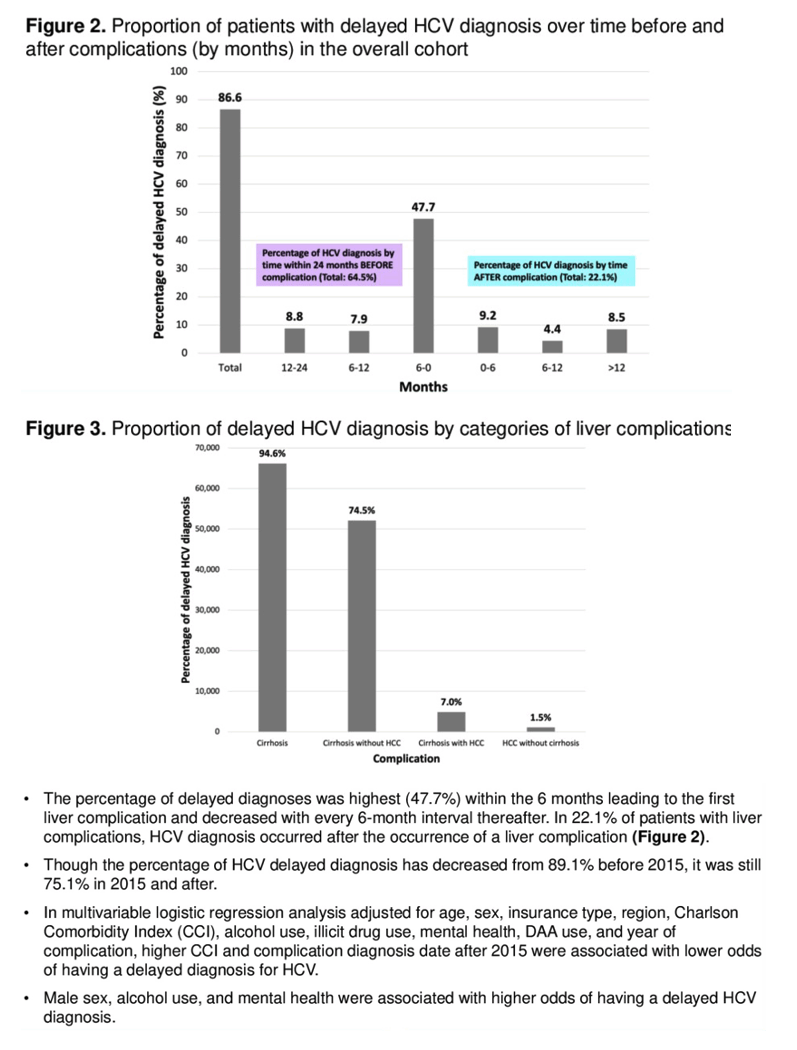
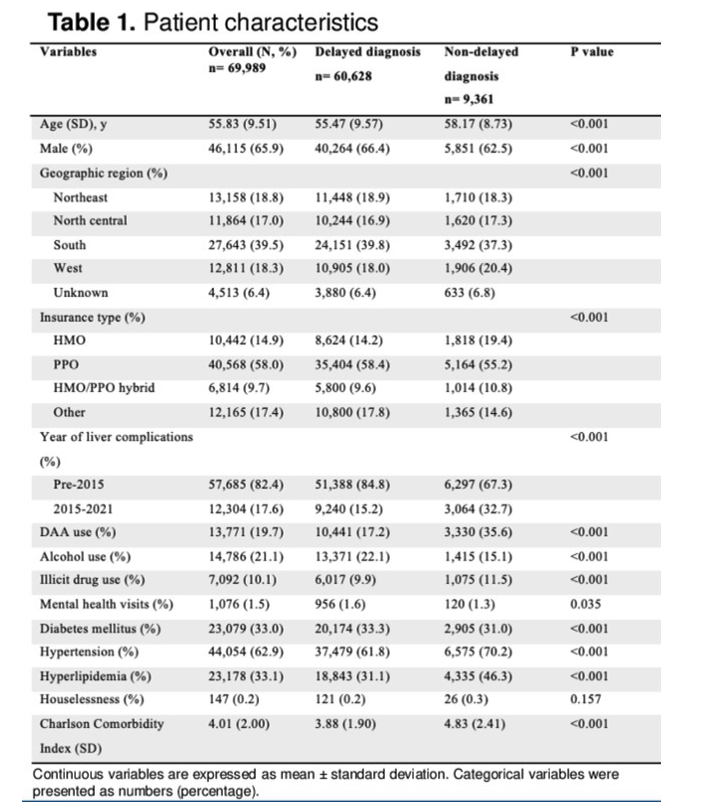
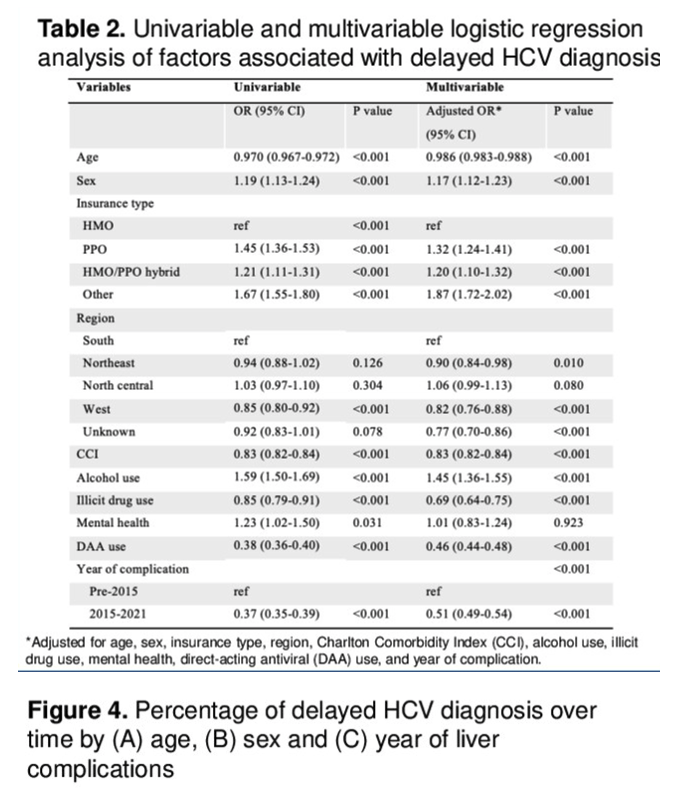
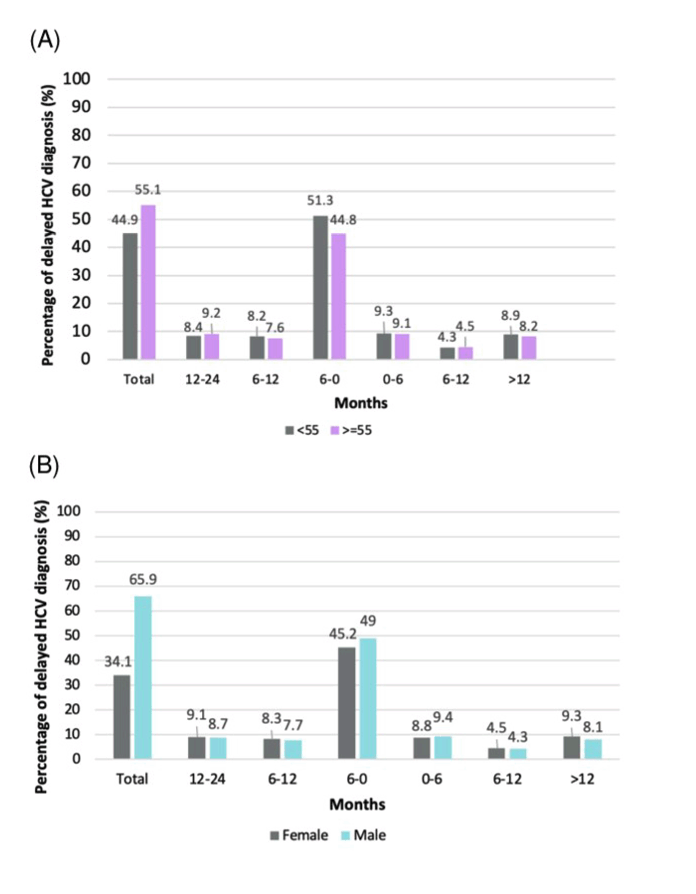
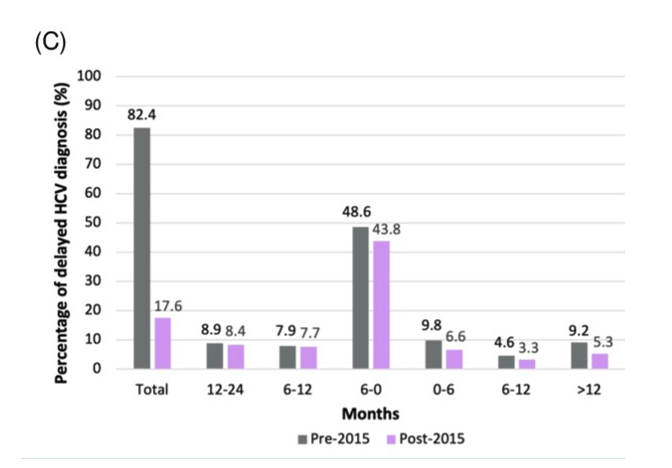
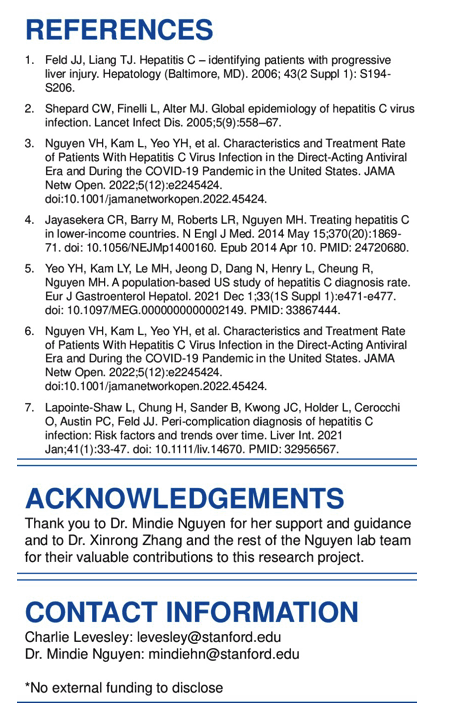
|
| |
|
 |
 |
|
|